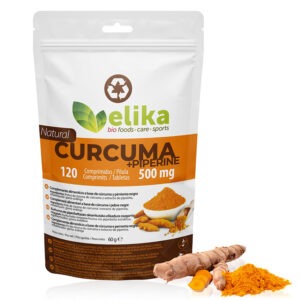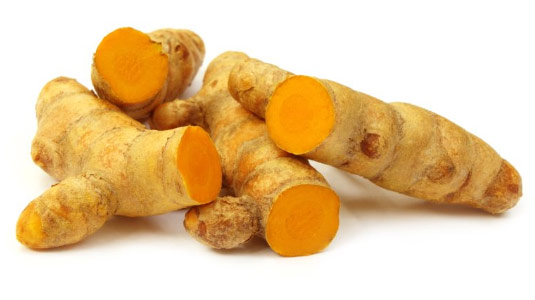-
 CURCUMA + Piperine tablets (120)14,65 €
CURCUMA + Piperine tablets (120)14,65 €
What is Turmeric?
Curcuma Curcuma longa is a perennial plant, up to one meter high, with a tuberous root and large, oval, sharp, light green leaves that emerge from the ground. The flowers, which may be white, pale yellow or purple, depending on the variety, appear in tight inflorescences, protected by bracts.

Benefits
Turmeric’s characteristic golden yellow colour is due to a colouring matter, curcumin, which is said to have antioxidant and anti-inflammatory properties. But this is not the only therapeutically active substance it contains. Turmeric is highly valued for its many health benefits.
Pepper
A small amount of pepper is added to turmeric to make it more bioavailable, i.e. so that it is better assimilated by the body and can better absorb and metabolise all the nutrients in turmeric and its key substance, curcumin. There is a lot of talk about whether it is better to take turmeric or its main component, curcumin, directly. At Elikafoods we think it is more beneficial for the body to take the whole food, the turmeric, and it is the body and its metabolism that absorb the curcumin and take advantage of its countless benefits. Curcumin is usually extracted from turmeric using solvents, which is why we believe it is more natural and cleaner to ingest turmeric.
Translated with DeepL.com (free version)
Take care of your balance
Turmeric has been revealed as a prodigious plant, which acts as a general balm on our health, acting on various fronts. It has been attributed anti-inflammatory, antioxidant, choleretic, digestive, carminative, hepatoprotective, lipid-lowering, liver detoxifying, anti-ulcer, cardioprotective and, in some sources, it has also been described as anti-tumour. Liver, heart, digestive system, immune system and skin are the main beneficiaries of possible treatments with turmeric.
